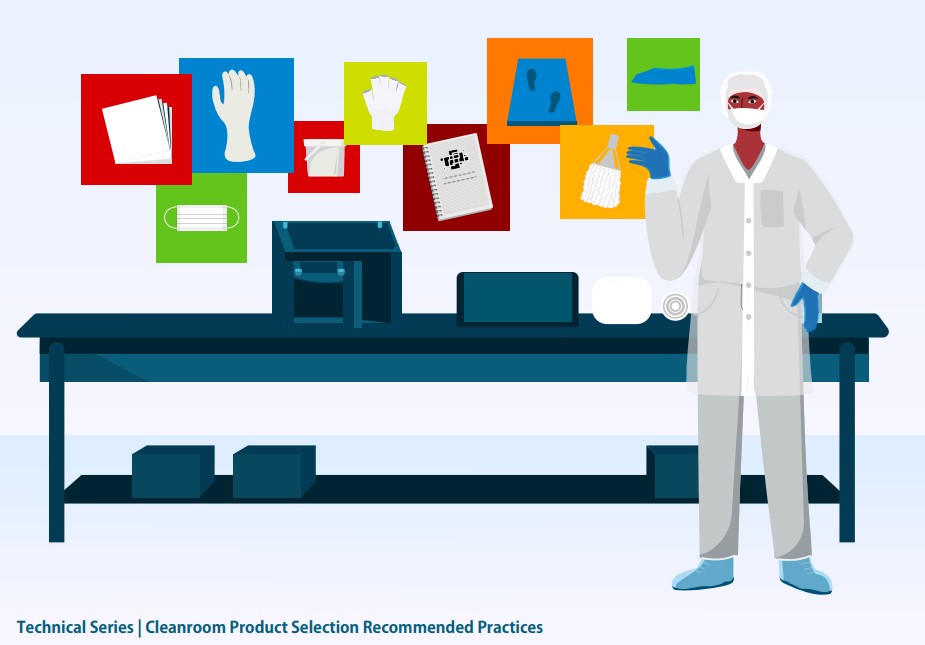Cleanroom Product Selection
Recommended Practices
Cleanroom Consumable & Vendor Selection: Recommended Practices
Class 10 cleanroom garments, Class 100 wipers, or gloves are non-existent. Claims of certification to broad cleanroom standards were a marketing trend in the 1990s, tying materials to Federal Standard 209E classifications.
However, this comparison is flawed. ISO 14644-1 and -2 replaced Federal Standard 209E in 1999 with different classifications (e.g., ISO 4, 5, 6). Describing consumables as non-linting or non-shedding is misleading; all items, whether reusable or single-use, will shed particles to some extent.
Beware of vendors perpetuating misleading marketing regarding environmental cleanliness standards for consumables.
Download it today to read more and optimize your cleanroom performance!

Cleanroom Gloves & Vendor Selection Recommended Practices
Cleanroom gloves protect the products you manufacture from contaminants. Without a doubt, the cleanroom glove will interact with products and processes more than any other cleanroom consumable you purchase.
They must meet your internal specifications for cleanliness, be durable enough for hours of use, and be comfortable for your operators to wear. In some labor-intensive operations (e.g. medical device manufacturing), the technicians’ hands become the tools that assemble an operation’s product.
Particularly in these applications, selecting a glove that is both clean—to prevent product cross-contamination—and comfortable—to drive operator efficiency—is mission critical.
IEST Working Group 5 is currently revising IEST-RP-CC005: Gloves and Finger Cots for Use in Cleanrooms and Other Controlled Environments.
Download it today to read more and optimize your cleanroom performance!
Cleanroom Wiper & Vendor Selection Recommended Practices
The main aim of a cleanroom garment is to capture particles generated by operators. While encapsulating the operator would be ideal for effectiveness, it severely restricts functionality.
Instead, managers should select garments that effectively trap particles, ensuring the cleanroom's air cleanliness classification and protecting its processes.
IEST-RP-CC003: Garment Considerations for Cleanrooms and Other Controlled Environments provides guidance on the performance, construction, and testing of both single-use and reusable cleanroom garments
Download it today to read more and optimize your cleanroom performance!
Cleanroom Garment & Vendor Selection Recommended Practices
The primary purpose of a cleanroom garment is to trap operator-generated particles. Encapsulating or creating a “bubble” around the operator would be most effective. However, this severely limits operator functionality.
Instead, cleanroom and facility managers must specify the appropriate garment that traps particles to effectively maintain the air cleanliness classification of the cleanroom and protect the processes performed there.
IEST-RP-CC003: Garment Considerations for Cleanrooms and Other Controlled Environments provides guidance on the performance, construction, and testing of both single-use and reusable cleanroom garments.
Download it today to read more and optimize your cleanroom performance!
Innovative Solutions for Critical Environments


.jpg)